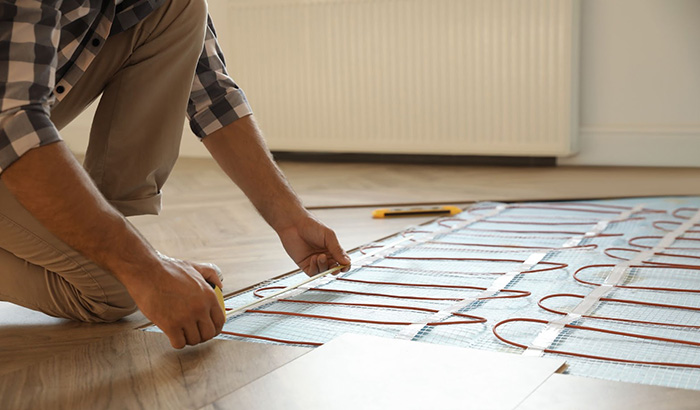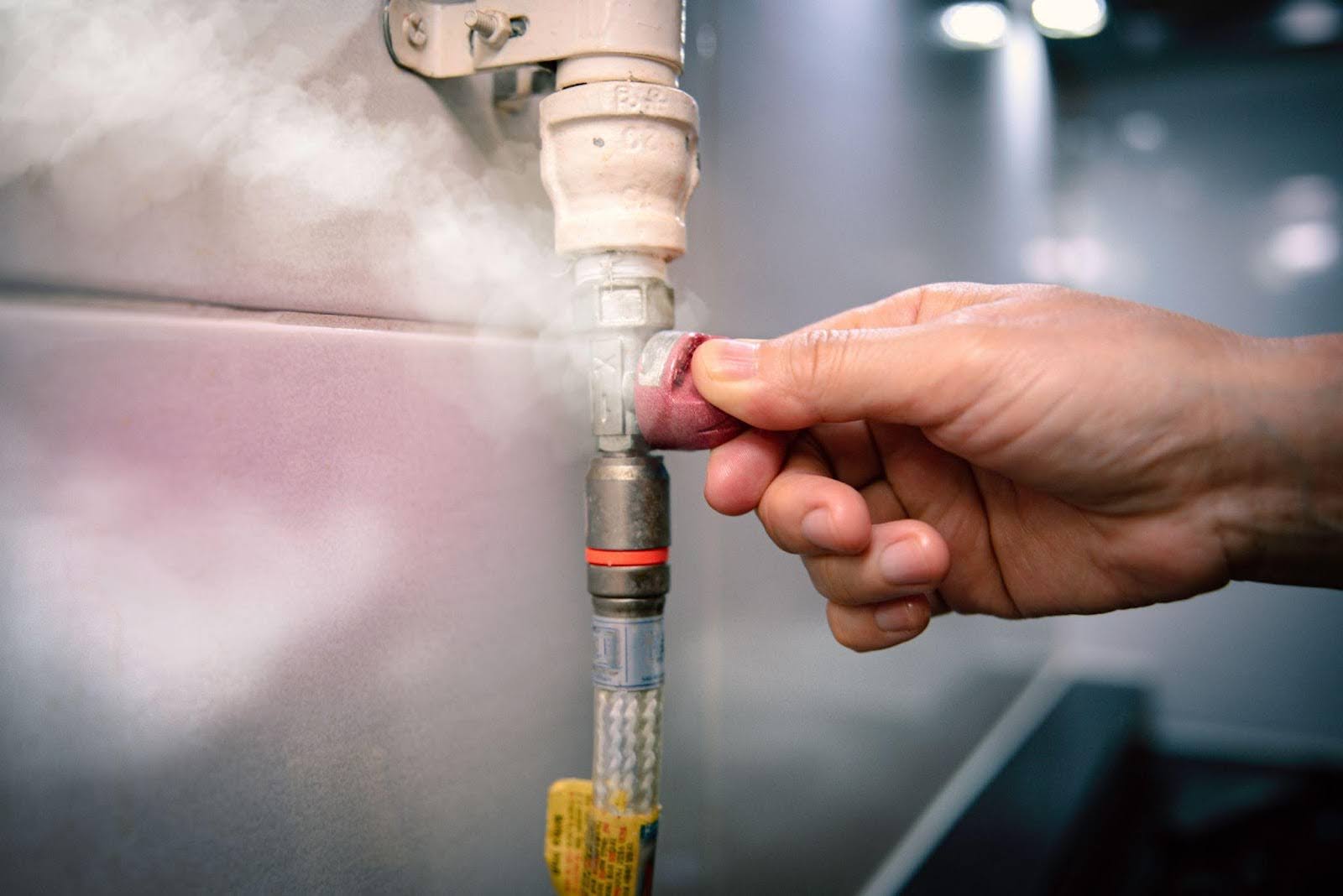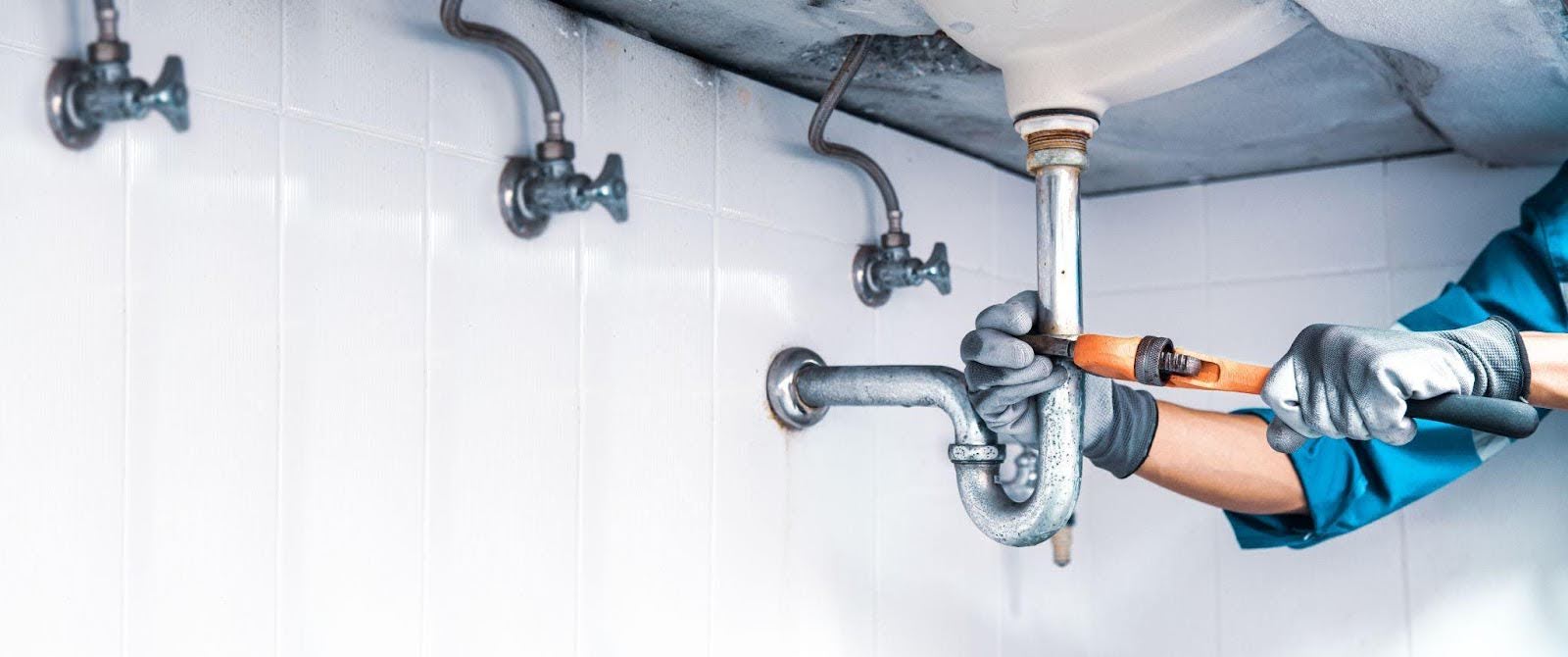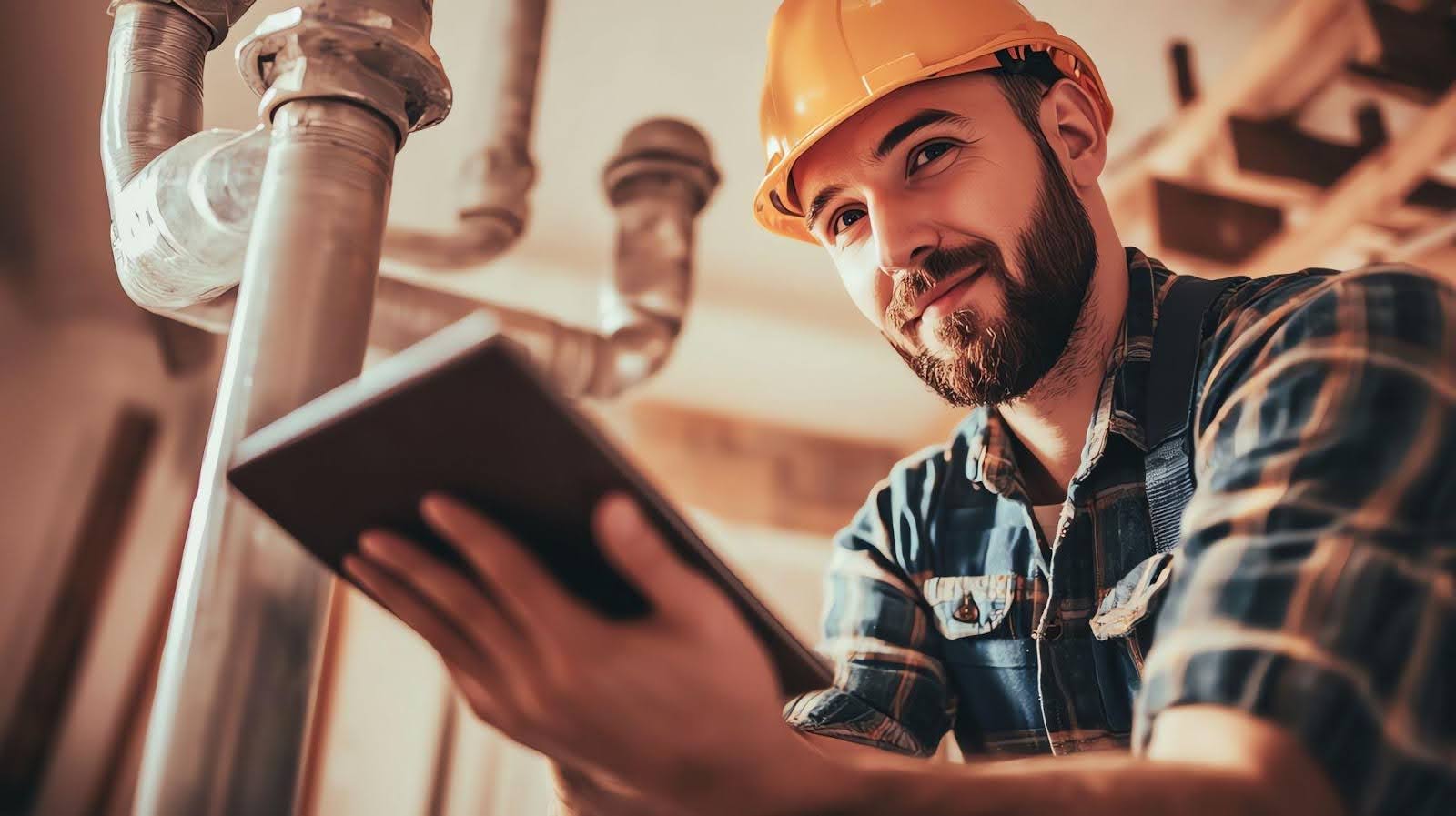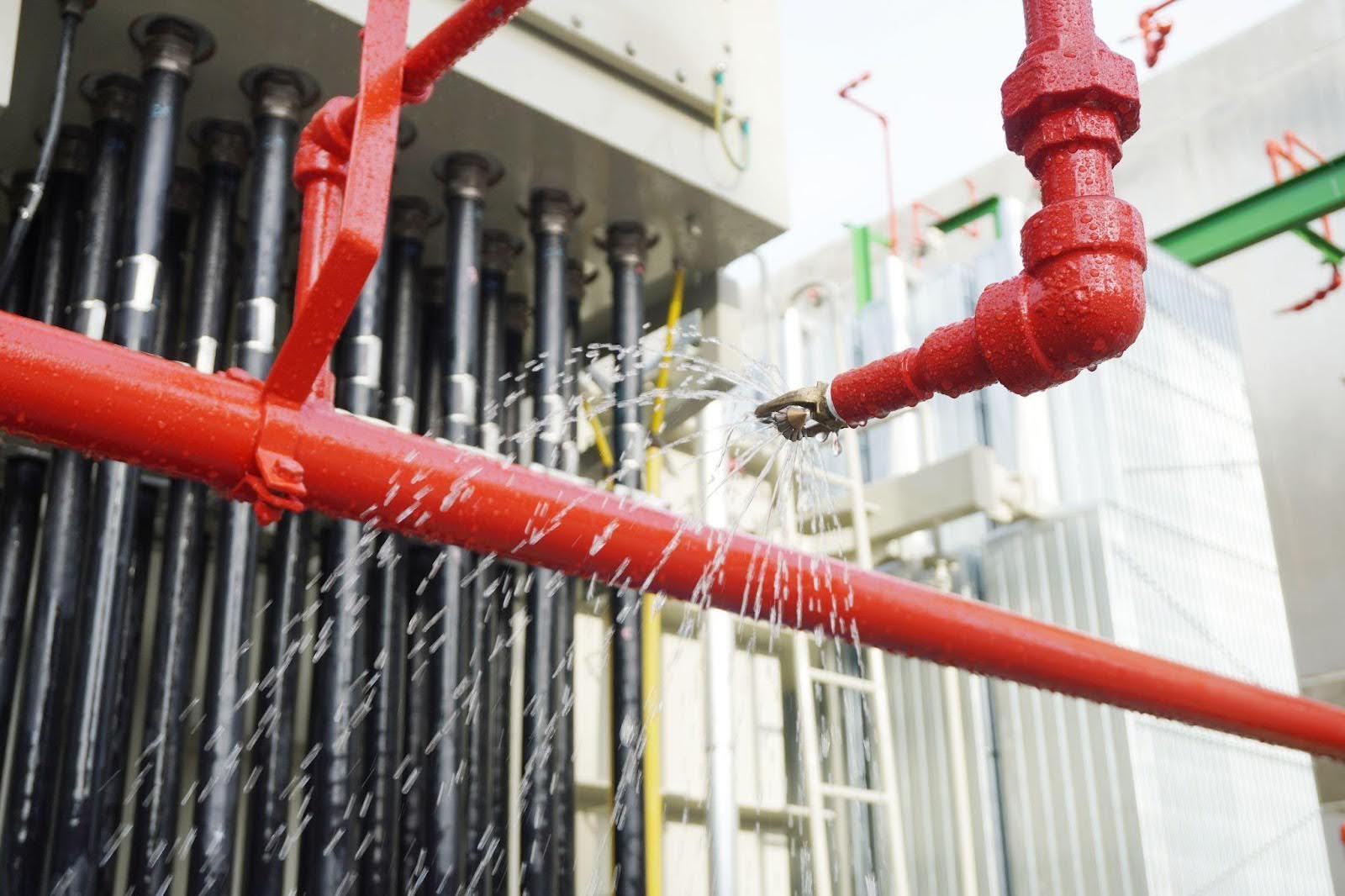Radiant heating stands out as a cutting-edge solution for home comfort, offering a fundamentally different approach from traditional heating systems.
Unlike the conventional methods that heat air and circulate it throughout your home, radiant heating warms up floors or panels, radiating heat directly to objects and people in the room. This direct transfer of heat from a warm surface to the room occupants provides a cozy, efficient warmth that feels more natural and is more evenly distributed.
The magic of radiant heating lies in its ability to heat your living space without the noise and drafts associated with forced-air systems, making it a silent guardian of your comfort.
Types of radiant heating systems
Diving into the world of radiant heating reveals a variety of systems, each with unique advantages and ideal applications. Let’s explore the two primary types: hydronic and electric radiant heating.
Hydronic radiant heating
This system uses hot water that flows through pipes installed beneath your floor. A boiler typically heats the water, which is then circulated through the piping, turning your floor into a large, cozy radiator.
Hydronic systems are celebrated for their efficiency, especially in larger spaces or entire homes, making them an ideal choice for those looking to heat spacious areas economically. They particularly excel when integrated into homes during construction or are retrofitted into existing spaces with careful planning.
Electric radiant heating
This variant employs electric cables or mats installed beneath your floor to generate heat. It’s often controlled room by room, providing a customizable heating solution that can easily adapt to your lifestyle and preferences.
Electric radiant heating shines in smaller areas or in spaces where installing a hydronic system might not be feasible. It’s perfect for bathroom renovations or under tile flooring, where it can turn cold, unwelcoming floors into warm, inviting surfaces.
When choosing the right type for your home, consider factors like the size of the area you’re heating, your existing heating infrastructure, and whether you’re embarking on new construction or retrofitting an older home.
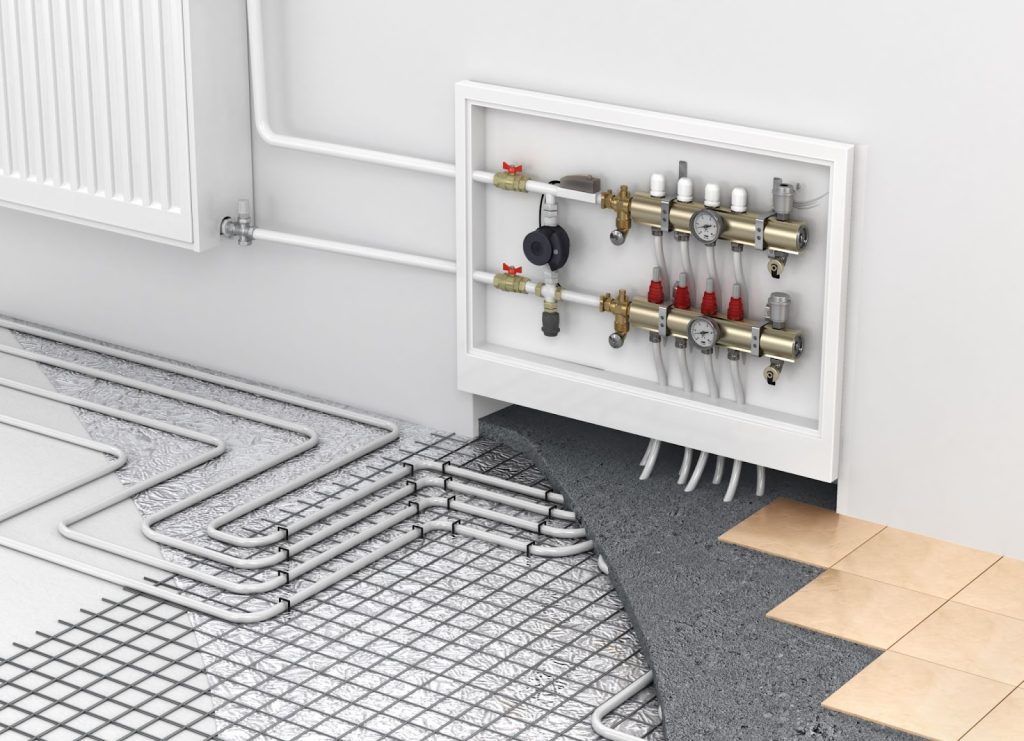
Planning your radiant heating installation
Embarking on your radiant heating journey requires thoughtful planning and preparation to ensure the best outcomes for your home’s comfort and efficiency. Let’s navigate through the crucial steps of assessment and design, choosing the right system, and understanding budgeting and timelines.
Assessment and design
A professional assessment stands as the cornerstone of a successful radiant heating installation. This critical step involves thoroughly examining your home’s current heating infrastructure, insulation levels, and flooring materials. An expert will also consider the layout of your space to design a system that ensures optimal heat distribution and efficiency.
Engaging with a professional at this stage allows you to tap into their expertise in identifying the most suitable type of radiant heating system, whether it’s hydronic or electric. They will also pinpoint any potential challenges and tailor the system design to your home’s specific needs, guaranteeing a seamless integration of comfort and efficiency.
Choosing the right system
Selecting the right radiant heating system hinges on several key factors, including floor type, energy source, and your specific heating needs. Here are some tips to guide you:
Floor type
Certain flooring materials, like tile and concrete, conduct and retain heat well, making them ideal for radiant heating. If you have or plan to have these materials, your home is a prime candidate for radiant heat. For carpeted areas, ensure the carpet’s thermal resistance is low enough to allow heat to pass through effectively.
Energy source
Consider your home’s existing energy source. Hydronic systems might better fit homes with access to natural gas or solar hot water systems. In contrast, electric systems are suitable for smaller areas or where installing a boiler isn’t feasible.
Heating needs
Assess the size and heating requirements of your space. Hydronic systems are typically more efficient for whole-house heating in colder climates, while electric systems are ideal for targeted heating in specific areas, like bathrooms.
Budgeting and timelines
Budgeting for a radiant heating system involves considering both upfront installation costs and long-term energy savings. While the initial investment might be higher than traditional heating systems, radiant heating offers significant energy savings over time.
For a typical home, you might expect the installation cost to range from moderate to high, depending on the system type and project complexity. Remember, hydronic systems often have higher upfront costs due to the extensive plumbing and boiler installation but tend to be more cost-effective in the long run, especially for larger spaces.
Installation timelines vary based on the system chosen and the scale of the project.
You can usually install electric systems more quickly, sometimes within a few days, while hydronic systems might take several weeks, particularly if they’re part of a larger renovation or new construction.
As you plan your radiant heating installation, remember that careful consideration at this stage lays the foundation for a cozy, efficient home. Engage with professionals, weigh your options, and prepare a realistic budget and timeline to turn your radiant heating dream into reality.
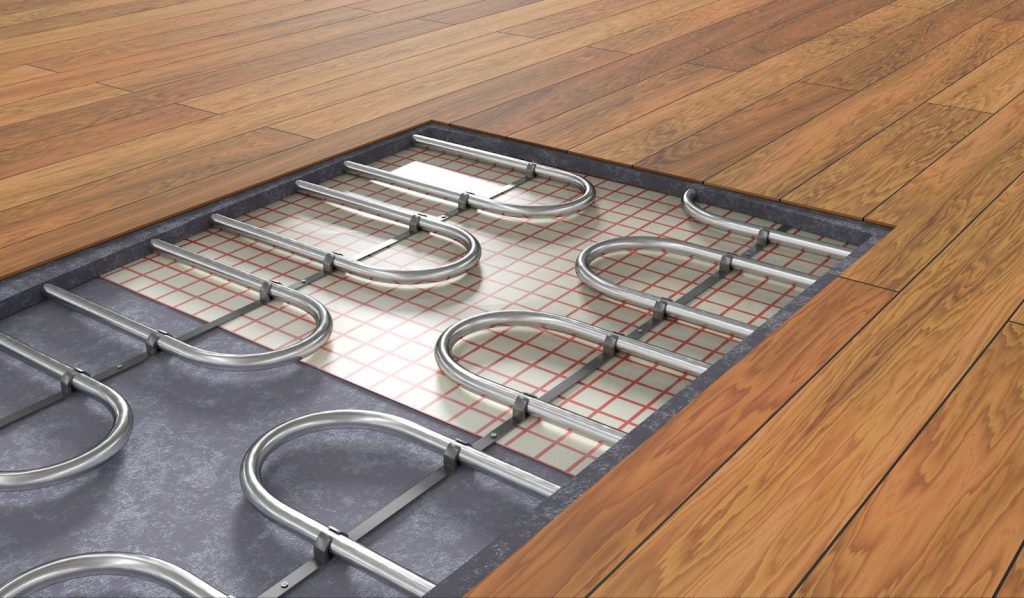
The installation process
Installing a radiant heating system is an exciting process, from the initial setup to adding your chosen flooring surface at the end. Whether you’re leaning towards the efficiency of a hydronic system or the simplicity of an electric setup, understanding each phase ensures a smooth transformation of your living space.
We’ve provided a step-by-step guide through this process, highlighting key steps and tackling potential challenges along the way.
Preparing the subfloor
The first step sets the stage for everything that follows. Preparing the subfloor involves ensuring it’s clean, level, and free of debris or damage.
For hydronic systems, this also includes installing insulation panels or reflectors to direct the heat upwards into your living space efficiently.
For electric systems, it involves ensuring the subfloor is able to support the weight and heat of the system. A well-prepared subfloor optimizes heat distribution and extends the life of your radiant heating system.
Laying the heating elements
Hydronic systems
This involves laying out the network of pipes or tubes that will carry hot water throughout your floor. The layout must be meticulously planned to cover the area evenly and ensure optimal heat distribution. Pipes are typically secured to the insulation panels or the subfloor, following the predetermined pattern that best suits the room’s layout.
Electric systems
Here, you’ll roll out heating mats or install heating cables, depending on the product. Distributing the mats or cables evenly across the area is crucial to avoid cold spots. Some systems come with a mesh that is cut to fit around obstacles, ensuring complete coverage without compromising the integrity of the heating elements.
Connecting to a power source or boiler
Electric systems
This phase involves connecting the heating elements to the thermostat and the power source. A qualified electrician should always handle electrical connections to ensure they meet local building codes and safety standards.
Hydronic systems
Connecting the network of pipes to the boiler and thermostat requires a professional who will ensure the system is correctly pressurized, leak-free, and efficiently integrated with your home’s existing heating infrastructure.
Installing the flooring surface
Once the heating elements are in place and tested, it’s time to install the flooring surface. Whether you’re opting for tile, laminate, or another material, the key is to choose a floor that conducts and withstands heat well.
The installation process varies with the flooring type, but generally, the floor should encapsulate the heating elements without affecting their performance or efficiency.
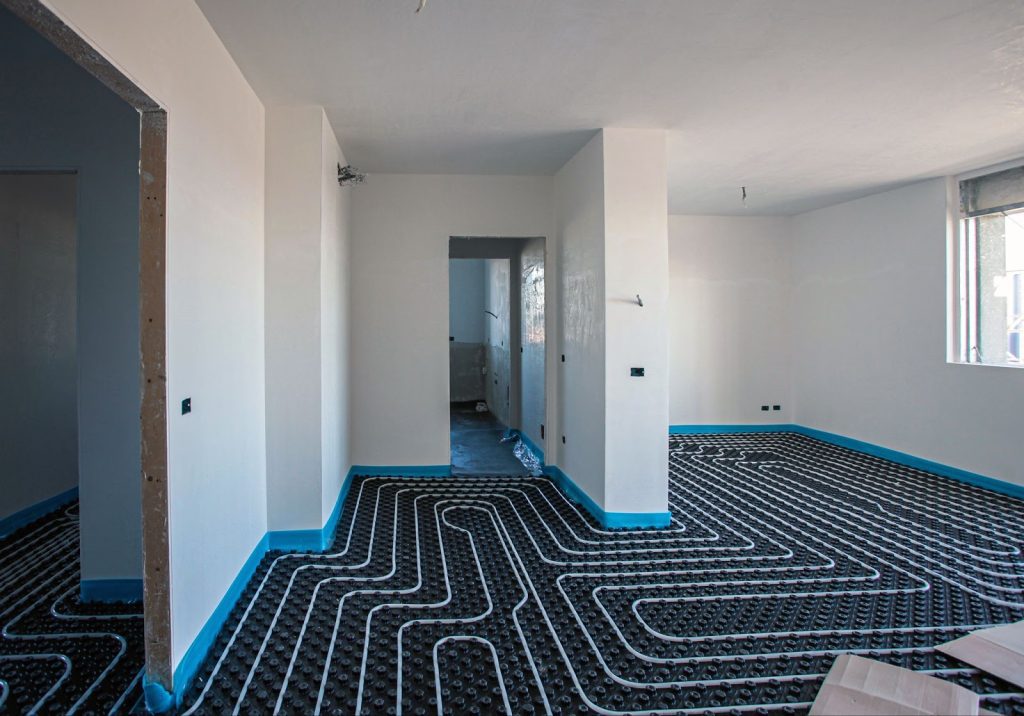
Post-installation: what to expect
As you step into this new era of home comfort, a few key steps will ensure your system operates at peak efficiency and provides the cozy warmth you expect. Let’s explore the essential post-installation practices, from testing and troubleshooting to maintenance, and finally, how to truly enjoy your radiant heat.
Testing and troubleshooting
After installation, a comprehensive testing phase kicks off. This critical step verifies that the system heats your space evenly and efficiently.
For electric systems, this means checking each circuit for proper operation and ensuring the thermostat responds accurately. In hydronic systems, it involves checking for leaks, ensuring the boiler operates correctly, and confirming that water circulates through the pipes without issues.
If a section of your floor isn’t warming as it should, or if the system isn’t responding to thermostat adjustments, don’t worry. These issues often stem from minor installation quirks that are easily adjustable. Consulting your installation professional will quickly resolve these hiccups, ensuring every corner of your home basks in gentle warmth.
Maintenance tips
Radiant heating systems boast low maintenance, but a little attention will go a long way in extending their lifespan and efficiency. Here are some tips to keep your system in top shape:
- For electric systems: Periodically check the thermostat and electrical connections for signs of wear or damage. Ensuring your system’s components remain in good condition prevents unexpected issues.
- For hydronic systems: Annually inspect the boiler and pump to ensure they’re functioning efficiently. Also, checking for leaks and monitoring the water pressure in the system can prevent problems before they arise.
- General maintenance: Regardless of your system type, keeping the floor area clear of obstructions and heavy furniture can enhance heat distribution and prevent system strain.
Enjoying Your Radiant Heat
Now that your radiant heating system is up and running smoothly, it’s time to revel in the comfort and efficiency it brings to your home. Here are a few tips to maximize your enjoyment:
- Optimize furniture placement: Arrange your furniture to ensure even heat distribution, avoiding large items directly on top of the heated floors when possible.
- Thermostat settings: Experiment with different thermostat settings to find your ideal comfort level. Radiant heating provides a consistent warmth that might allow for lower thermostat settings compared to traditional heating systems.
- Embrace energy efficiency: Enjoy the reduced energy bills that come with radiant heating’s efficiency. Feel good knowing you’re contributing to a greener planet by lowering your home’s energy consumption.
Radiant heating transforms your home into a sanctuary of warmth and comfort. By following these post-installation tips, you ensure your system operates flawlessly, providing the efficient, even heat you dreamed of. Welcome to the radiant heating lifestyle, where every step in your home is a warm embrace.
Salisbury Plumbing
Salisbury Plumbing shines as the ideal choice for anyone in Utah County looking to embrace the efficiency and warmth of radiant heating. Choosing Salisbury Plumbing for your radiant heating installation means partnering with a team that blends professionalism with a personal touch.
As a locally owned entity familiar with Utah County’s specifics, we provide tailored solutions, prioritizing cleanliness, minimal disruption, and customer satisfaction. With 24-hour emergency support, licensed plumbers, and discounts for seniors, teachers, and police, Salisbury Plumbing guarantees quality and reliability in enhancing your home’s warmth and comfort.
Call 385-503-5488 or contact Salisbury Plumbing for a free estimate and experience a seamless experience resulting in reliable comfort for you and your family.
toto slot

